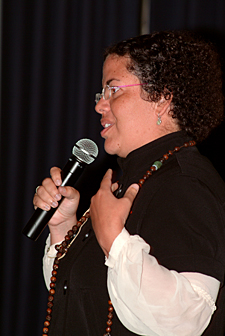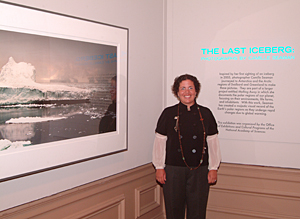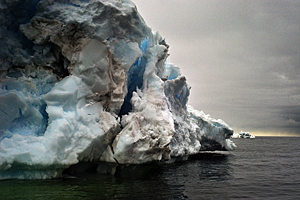

- Rozovsky wins prestigious NSF Early Career Award
- UD students meet alumni, experience 'closing bell' at NYSE
- Newark Police seek assistance in identifying suspects in robbery
- Rivlin says bipartisan budget action, stronger budget rules key to reversing debt
- Stink bugs shouldn't pose problem until late summer
- Gao to honor Placido Domingo in Washington performance
- Adopt-A-Highway project keeps Lewes road clean
- WVUD's Radiothon fundraiser runs April 1-10
- W.D. Snodgrass Symposium to honor Pulitzer winner
- New guide helps cancer patients manage symptoms
- UD in the News, March 25, 2011
- For the Record, March 25, 2011
- Public opinion expert discusses world views of U.S. in Global Agenda series
- Congressional delegation, dean laud Center for Community Research and Service program
- Center for Political Communication sets symposium on politics, entertainment
- Students work to raise funds, awareness of domestic violence
- Equestrian team wins regional championship in Western riding
- Markell, Harker stress importance of agriculture to Delaware's economy
- Carol A. Ammon MBA Case Competition winners announced
- Prof presents blood-clotting studies at Gordon Research Conference
- Sexual Assault Awareness Month events, programs announced
- Stay connected with Sea Grant, CEOE e-newsletter
- A message to UD regarding the tragedy in Japan
- More News >>
- March 31-May 14: REP stages Neil Simon's 'The Good Doctor'
- April 2: Newark plans annual 'wine and dine'
- April 5: Expert perspective on U.S. health care
- April 5: Comedian Ace Guillen to visit Scrounge
- April 6, May 4: School of Nursing sponsors research lecture series
- April 6-May 4: Confucius Institute presents Chinese Film Series on Wednesdays
- April 6: IPCC's Pachauri to discuss sustainable development in DENIN Dialogue Series
- April 7: 'WVUDstock' radiothon concert announced
- April 8: English Language Institute presents 'Arts in Translation'
- April 9: Green and Healthy Living Expo planned at The Bob
- April 9: Center for Political Communication to host Onion editor
- April 10: Alumni Easter Egg-stravaganza planned
- April 11: CDS session to focus on visual assistive technologies
- April 12: T.J. Stiles to speak at UDLA annual dinner
- April 15, 16: Annual UD push lawnmower tune-up scheduled
- April 15, 16: Master Players series presents iMusic 4, China Magpie
- April 15, 16: Delaware Symphony, UD chorus to perform Mahler work
- April 18: Former NFL Coach Bill Cowher featured in UD Speaks
- April 21-24: Sesame Street Live brings Elmo and friends to The Bob
- April 30: Save the date for Ag Day 2011 at UD
- April 30: Symposium to consider 'Frontiers at the Chemistry-Biology Interface'
- April 30-May 1: Relay for Life set at Delaware Field House
- May 4: Delaware Membrane Protein Symposium announced
- May 5: Northwestern University's Leon Keer to deliver Kerr lecture
- May 7: Women's volleyball team to host second annual Spring Fling
- Through May 3: SPPA announces speakers for 10th annual lecture series
- Through May 4: Global Agenda sees U.S. through others' eyes; World Bank president to speak
- Through May 4: 'Research on Race, Ethnicity, Culture' topic of series
- Through May 9: Black American Studies announces lecture series
- Through May 11: 'Challenges in Jewish Culture' lecture series announced
- Through May 11: Area Studies research featured in speaker series
- Through June 5: 'Andy Warhol: Behind the Camera' on view in Old College Gallery
- Through July 15: 'Bodyscapes' on view at Mechanical Hall Gallery
- More What's Happening >>
- UD calendar >>
- Middle States evaluation team on campus April 5
- Phipps named HR Liaison of the Quarter
- Senior wins iPad for participating in assessment study
- April 19: Procurement Services schedules information sessions
- UD Bookstore announces spring break hours
- HealthyU Wellness Program encourages employees to 'Step into Spring'
- April 8-29: Faculty roundtable series considers student engagement
- GRE is changing; learn more at April 15 info session
- April 30: UD Evening with Blue Rocks set for employees
- Morris Library to be open 24/7 during final exams
- More Campus FYI >>
Click here to download a podcast of Camille Seaman's lecture.
3:19 p.m., Sept. 12, 2008----The moment that contemporary photographer Camille Seaman “met her planet” is seemingly frozen in time, not to be forgotten, just like her evocative images of monolithic icebergs.
Seaman shared her personal journey of discovery and passion for her art during her lecture, “Melting Away: The Last Iceberg,” on Sept. 10, at the University of Delaware. The presentation, sponsored by UD's William S. Carlson International Polar Year Events and University Museums, preceded the opening reception for two exhibitions at the University Gallery--“The Last Iceberg: Photographs by Camille Seaman,” and “Poles Apart: Photography, Science and Polar Exploration.”
By giving up her seat on an overbooked flight in 1999, Seaman said she earned a free roundtrip ticket to any destination in the United States aboard Alaska Airlines. She decided to go to Kotzebue, Alaska, on the Bering Strait. When she arrived, it was -30 degrees Fahrenheit.
While in Kotzebue, Seaman, who is of the Shinnecock tribe on Long Island, N.Y, said she was intrigued by the idea of human migration on a land bridge between the continents, a curiosity that propelled her on a long walk in search “of where the ice ends and the water begins.”
Bundled up, her face covered in a Darth Vader-like mask, she began walking on ice so dry “it makes a Styrofoam crunching sound.” Eskimos on snowmobiles kept checking on her, she said, to see if she was okay.
Although she did not reach her geographic destination, Seaman said she had “the most profound experience” when she turned around to head back to town.
“As I walked, for the first time in my life I felt like I had met my planet, and by that, I understood that I stood on a rock in space and it was mine,” Seaman said. “We belonged to each other--that I came from it, and I was part of it. It was a whole new way of seeing things.”
In December 2004, Seaman went on her first trip to Antarctica, where she began taking portraits of majestic icebergs, attempting to capture their unique personalities as if they were people.
“There's nothing that prepares you for how big they are, for how awesome they are,” she said.
The largest iceberg Seaman has seen was too big to photograph, at 27 miles long and 14 miles wide.
“It was so big, it was reflecting its own light. It was glowing white on the surface,” Seaman said.
Seaman said she was “pretty apathetic” about considering her photography as a career focus until Sept. 11, 2001. As a teenager growing up in New York City, she delivered packages to the World Trade Center as a bike messenger and thus had a very strong physical memory of the buildings. That connection helped her to understand her own mortality in a different way, she said, as well as the power of a photograph as a historic document “to prove that something existed.”
“Just like a switch,” Seaman said, she knew that she was going to put all of her energy into photography.
“What is your switch, and are you doing what it is you are called to do?” she asked the audience. “Things are really bad in the Arctic, but that's not an excuse to say it's too late,” she noted.
“We have before us an opportunity for new possibilities, new potential, something more amazing, a legacy for not just our children, or our great-grandchildren, but as my ancestors say, for the seventh generation,” Seaman said. “When we do something, we plan seven generations forward so that our effect is felt in a positive way that far forward.
“I think it's so easy to say, 'Oh, what can one person do'? You can just do what you do best, and if you do that, it will have an effect,” she urged.
At the opening reception for the exhibition, UD President Patrick Harker noted that the University is continuing polar research and education that was begun by one of his predecessors, William S. Carlson, who was president of UD from 1946-50 and an active polar explorer.
UD's strength in polar studies is an important example of the Initiative for the Planet, with its focus on sustainable practices and finding solutions to critical energy and environmental issues through national and international leadership, Harker said.
“This exhibition is a really good example of what we do well here--we're a large university with the soul of a small place, and we're working across disciplinary boundaries to make a difference,” he noted.
“It's important that the beauty and majesty that we see here is passed on to the next generation.”
The exhibitions, which run through Dec. 7, were made possible through a partnership between UD's William S. Carlson International Polar Year Events and the University Museums. They are open to the public free of charge. Gallery hours are Tuesdays, Thursdays and Fridays 11 a.m.-4 p.m.; Wednesdays 11 a.m.-8 p.m.; and Saturday and Sundays 1-4 p.m.
Article by Tracey Bryant
Photos by Greg Drew



